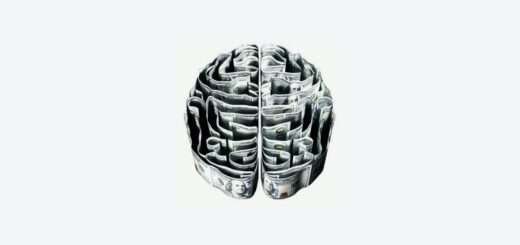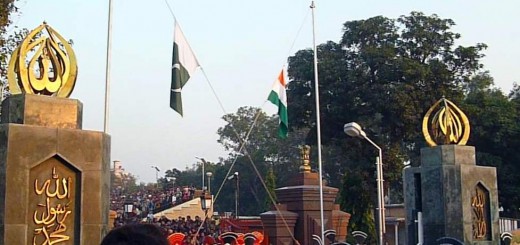SWOT Analysis of a SME: Hashmi Company Limited
SWOT Analysis of a Small and Medium-Sized Enterprise [SME]: Hashmi Aluminium Company Limited
Small and Medium-Sized Enterprise [SME] are considered backbone for developing and emerging economies as they contribute to local GDP and employment. Below is a SWOT Analysis of a Small and Medium-Sized Enterprise [SME], Hashmi Company Limited Pakistan.
MISSION STATEMENT
“To provide quality tin based products to our customers, keeping in perspective their specific requirements of our product.”
SWOT ANALYSIS
STRENGTHS
- Hashmi Aluminium is the largest manufacturer of tin sheet items, both in turns of volume and rupee turnover. Its sales turnover of 296 million in the year ending June 30th, 1996 was the highest in the industry.
- For Hashmi Aluminium , competition is based on quality and not on therefore, it has been able to retain its core clientele of around 150 of the leading corporate customers like Shell, R & C, the Army, Caltex e.t.a. over a period of more than 40 years.
- A fully integrated in house engineering department insulates it from turning to engineering consultants every time a technical problem arises on the production line. Therefore, productivity does not have to suffer due to lack of back up services.
- It has an in house R&D bureau which employs design engineers and sophisticated Computer Aided Drawing (CAD) techniques for development of new product design for the clients.
- The operations are forward integrated, as printing and dyeing on the cans is also done in the company.
- Strong management is the vital strategic strength of the company. All the directors are professional mangers with background in their respective areas of expertise, and not traditional family based who are largely held responsible for the lack of professionalism in Pakistani corporations.
- As of June 30th 1996, Hashmi Aluminium has no L.T. debt, and the current ratio is at very healthy 1.05. Also, it has hovered in the range of 95 – 1.05 during the three year period of 1993 – 1996.
- The company had an over draft (O.D) limit with Allied bank at a weighted average rate of approx. 18.5% for purposes of import financing during 1996. This rate is less than 1.5 % above the prime lending rate of this bank for purposes of import financing.
- A large majority of the company’s factory work force of around 600 employees lives in shanty towns in the Nazimabad hills which are located behind SITE. Therefore, production is not severely affected by law and order problems as these areas are largely safe from the city wide violence.
WEAKNESSES
- The average age of the machinery is around 25 years which has outlived its efficient live.
- Due to the large variety of product specifications and designs, the company cannot enjoy economies of scale which comes from the mass production of fewer products. Therefore, the Over Head costs of the company are also greater than that of its competitors.
- The production process being outdated is still largely mechanical, and does not use precision equipment or state of the art computer systems which warrants greater productivity.
- The major raw material, that is tin metal sheets are imported from abroad. Therefore, inventories have to be maintained at all times which has resulted in an increase of more than 100% in inventory turnover from 21 days in 1994 to 45 days last year.
- A large variety of reasons like law and order, competitive pressures e.t.a., the capacity utilisation has decreased to an all time low of around 65%.
- Due to is emphasis on quality and variety, the prices are above that of its competitors. Thus, Hashmi company is losing its customers to cheaper, more specialised competitors.
OPPURTUNITIES
- Hashmi Aluminium is currently working on ISO 9001 quality control implementation programme which it hopes to accomplish by December 1997. The implementation of this programme which is a WTO requirement by the year 2000 would enhance the local credibility and hence revenue generation capacity.
- The company’s suppliers are also working on a quality control implementation programme. This would enable fully integrated quality production processes at the company.
- The company is considering diversifying into plastic based manufacturing which is the new generation materials for can manufacturing industries, and are already being used in pesticides and lubricants packaging industries.
- It can also go in the aluminium can manufacturing industry which are extensively used in the rapidly growing beverage industry. The capital requirement for this project is considered in the region of around Rs.150 million, with a payback period of approximately 4 years.
- Hashmi Can is the only public limited company listed on the Karachi Stock Exchange. Therefore, it has access to this source of capital for its future investment needs. The company declared a dividend of 40% for the year ended June 30th, 1996 and therefore enjoys investor support and a good reputation.
- Tin cans have a longer life than tetra packaging which is used in the food industry. However, this short life span of tetrapaks makes tin cans a better choice for longer shelf life items like condensed milk.
- Aluminium Can manufacturing can become backward integrated if Pakistan Steel goes into the manufacturing of tin sheets. This will protect the can manufacturing industry from import duties and foreign exchange outflow which is in effect imposing an indirect duty every year in the form of devaluation.
- The customers are becoming increasingly quality conscious as competition brings into focus considerations other than price. Hashmi Can is well positioned to reap the maximum benefits out of this new thrust on quality consciousness.
THREATS
- The demand for tin cans is a derived demand which is dependant on the production of goods in which these cans are finally used from pesticides to lubricants to shoe polishes and bottle caps e.t.a.. These are completely diversified industries which have their own business cycles of low or high demand. Thus, their is no stability in demand for the can manufacturing industry which is responsible for volatile swings in corporate earnings of this sector.
- Tariff anomalies is another area which discourages investments in the tin can manufacturing industry. The current Central Excise duty structure is:
- The period for a new investment in capital goods is typically in the range of 2 – 3 years starting from feasibility study to technical studies and implementation. Successive governments, on the other hand change every year with the announcements of the annual budget. This keeps investor confidence shaky and retards growth of the economy as a whole.
- The basic raw materials used in the manufacturing of cans i.e. tin sheets is imported. This makes the industry highly vulnerable to the devaluation’s in the Pakistani Rupee, which are now a regular feature of the economy.
- Until 1985, Hashmi Can had a veritable monopoly in its industry. However, since then many new manufacturers have entered and are entering into this industry. These are largely small cottage based industries which can enter into the industry by being more labour intensive and operate at a lower cost to the organised sector which has higher overhead expenses.
- Many large corporations are setting up captive can manufacturing units, or are patronising specialised units who are geared to the specific needs of these organisations. An example is the setting up of a captive can manufacturing unit by Lever Brothers .
| Strengths and Weaknesses | Organisation weightage | Industry weightage | Organisational performance | |
| Strengths | ||||
| 1. Largest Producer
1. Largest Product Variety 2. Stringent Quality Controls 3. Backup Engineering Services 4. In House R&D 5. Forward Integration 6. Management Quality 7. Strong Financial Performance 8. Safe Supply Of Labour Force Weaknesses 1. Outdated Machinery 2. High Overheads 3. Low Capacity Utilisation 4. Low Tech Production Process 5. High Inventory Costs 6. High Cost Products
|
3
3 4 4 4 3 4 4 3
1 2 2 2 2 1 |
2
2 3 4 4 3 3 4 4
3 3 4 3 3 4 49 |
.04
.04 .06 .08 .08 .06 .06 .08 .08
.06 .06 .08 .06 .06 .08 |
.12
.12 .24 .32 .32 .18 .24 .32 .24
.06 .12 .16 .12 .06 .08 3.06 |
| Opportunities and Threats
|
Org. weightage | Industry weightage | Org. performance | |
| Opportunities
1. ISO 9001 Implementation 2. Quality Control Programme for Suppliers 3. Diversification into plastic 4. Aluminium cans production 5. Access to Capital Markets 6. Durability 7. Potential of Backward Integration 8. Quality Conscious Customers Threats 1. Derived Demand 2. Tariff Anomalies 3. Inconsistent Government Policies 4. Devaluation’s 5. Competition from small producers 6. Captive units by large corporations
|
4 3
2 2 3 3 1 3
3 3 3 3 4 2 |
3 2
4 2 3 4 2 2
3 4 3 4 3 3 42 |
.072 .04
.10 .04 .072 .10 .04 .04
.072 .10 .072 .10 .072 .072 |
.29 .12
.20 .08 .22 .30 .04 .12
.22 .30 .22 .30 .29 .14 2.84 |
Hasmi Aluminium Can falls into Quadrant IV and the best strategy for this quadrant is “Hold and Maintain” strategies. Market penetration and product development are widely recommended strategies for such companies.
SPACE MATRIX
| INTERNAL STRATEGIC
POSITION |
EXTERNAL STRATEGIC POSITION | ||
| Financial Strength
Return on Investment Leverage Liquidity Working Capital Cash Flow Ease of Exit from market Risk involved in business Average Competitive Advantage Market Share Product Quality Product Life Cycle Customer Loyalty Competition’s capacity utilisation Technological know how Control over suppliers and Distributors
Average |
5 4 4 6 4 3 5 +4.43
-2 -1 -1 -2 -1 -3 -1
-1.57
|
Environmental Stability
Technological change Rate of inflation Demand variability Price range of competing products Barriers to entry into market Competitive pressures Price elasticity of demand Average Industry Strength Growth potential Profit potential Financial stability Technological know how Resource utilisation Capital intensity Ease of entry into market Productivity, Capacity utilisation Average |
-2 -3 -4 -5 -1 -4 -3 -3.14
4 3 4 3 4 4 3 5 + 4.29 |
TOWS MATRIX
| OPPORTUNITIES
1. ISO 9001 Implementation 2. Quality Control Programme for Suppliers 3. Diversification into plastic 4. Aluminium cans production 5. Access to Capital Markets 6. Durability 7. Potential of Backward Integration 8. Quality Conscious Customers 9. Largely untapped up country market
|
THREATS
1. Derived Demand 2. Tariff Anomalies 3. Inconsistent Government Policies 4. Devaluation’s 5. Competition from small producers 6. Captive units by large corporations |
|
| STRENGHTS
1. Largest Producer 2. Largest Product Variety 3. Stringent Quality Controls 4. Backup Engineering Services 5. In House R&D 6. Forward Integration 7. Management Quality 8. Strong Financial Performance 9. Safe Supply Of Labour Force
|
SO STRATEGIIES
1. Use high quality standards to attract quality conscious customers. (S3,O1,O2,O8) 2. Strong financial performance makes it easier to raise capital for expansion into plastic/aluminium can. (S8,O3,O4,O5) 3. R&D be used to provide design facilities to prospective customers.(S5,S2,S7,O9,O8)
|
ST STRATEGIES
1. Quality should be emphasised to raise customer loyalty and thus the switching costs too. (S2,S3,T5,T6) 2. Currency risk be managed by obtaining forward cover. (S7,T4)
|
| WEAKNESSES
1. Outdated Machinery 2. High Overheads 3. Low Capacity Utilisation 4. Low Tech Production Process 5. High Inventory Costs 6. High Products Costs because of emphasis on quality
|
WO STRATEGIES
1. Sources of backward integration should be explored to compensate for higher production costs. (W2,W6,O7) 2. Higher inventory cost should be reduced as part of the ISO 9001 implementation programme.(W5,O1,O2) 3. Low cost product might be arranged for the lower end of the market like small food processors. (W6,O9) |
WT STRATEGIES
1. Lobbying needs to be carried out at government through trade bodies to amend the tariff anomalies facing the industry. (W2,W3,T2,2T3,T4) 2. Acquisition of one or more small industries to capture a currently patronised target market. (W2,W3,T5,T6) |
The recommended strategies for Hashmi Aluminium Can would be a mixture of the following, as it lies on both quadrant 1 and 2.
| Quadrant I | Quadrant Ii |
| Market Development | Concentric Diversification |
| Market Penetration | Joint Ventures |
| Product Development | Horizontal Diversification |
| Forward Integration | |
| Backward Integration |













